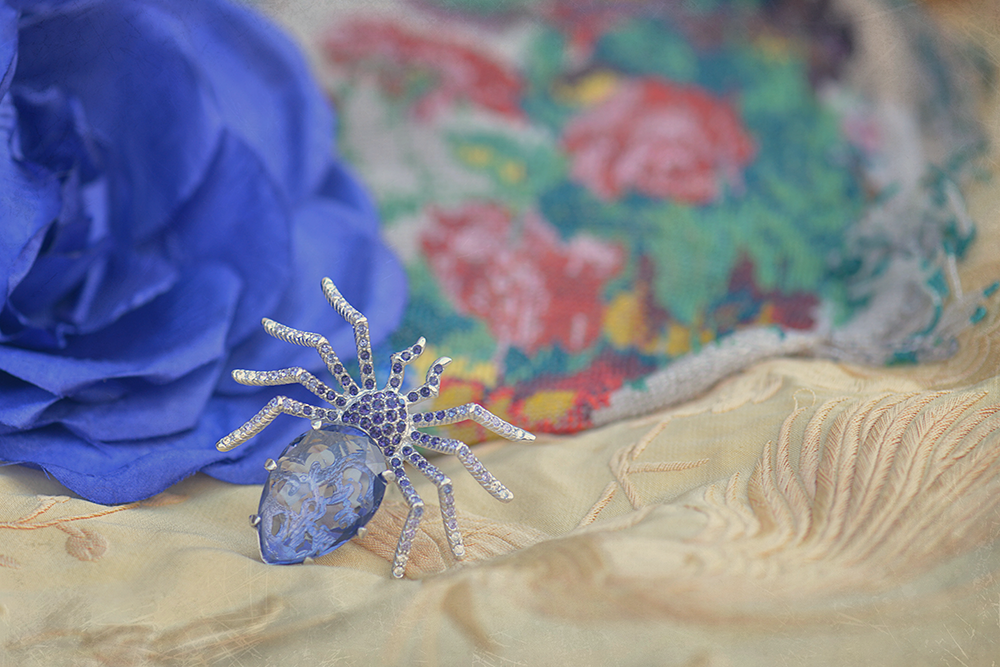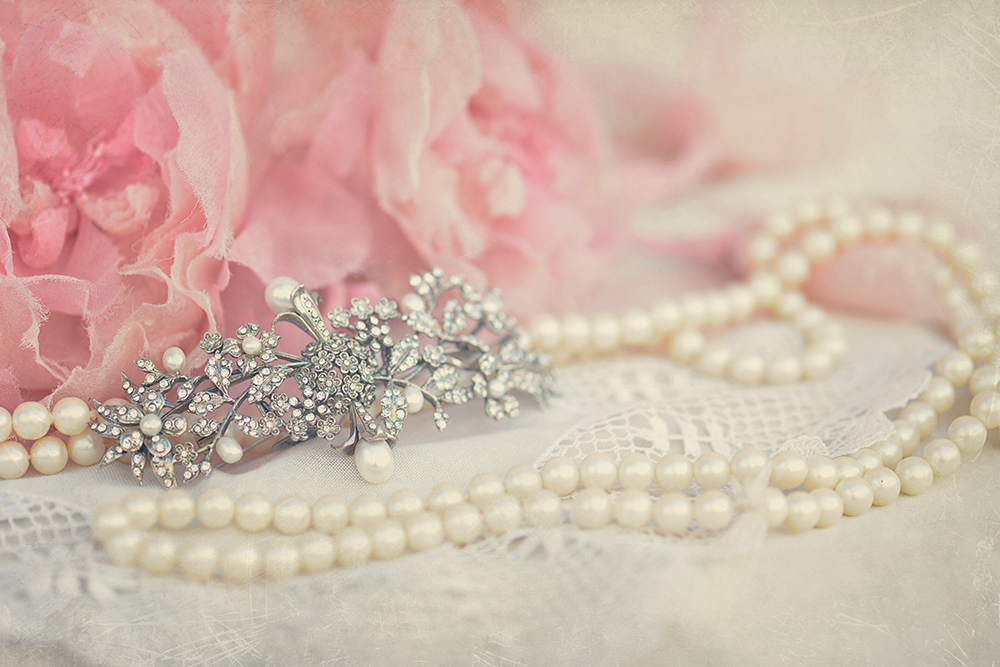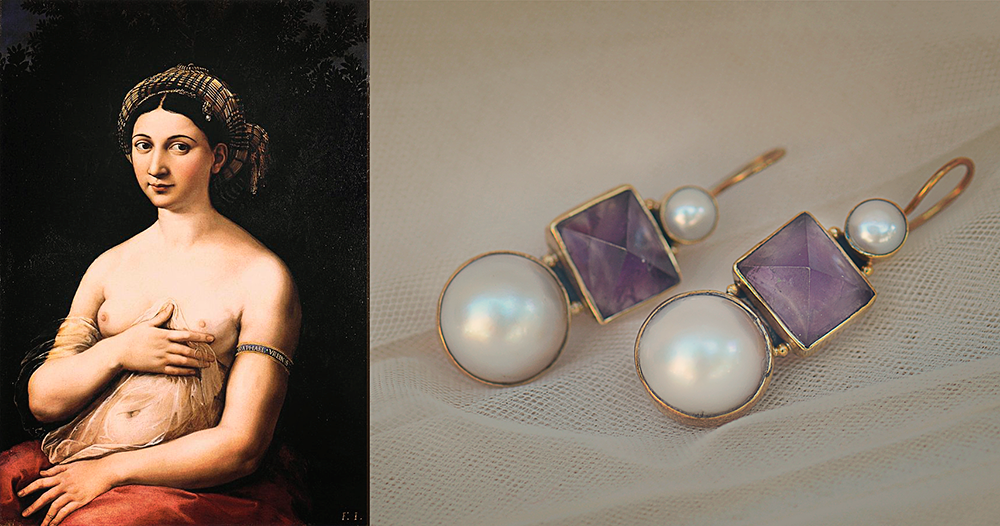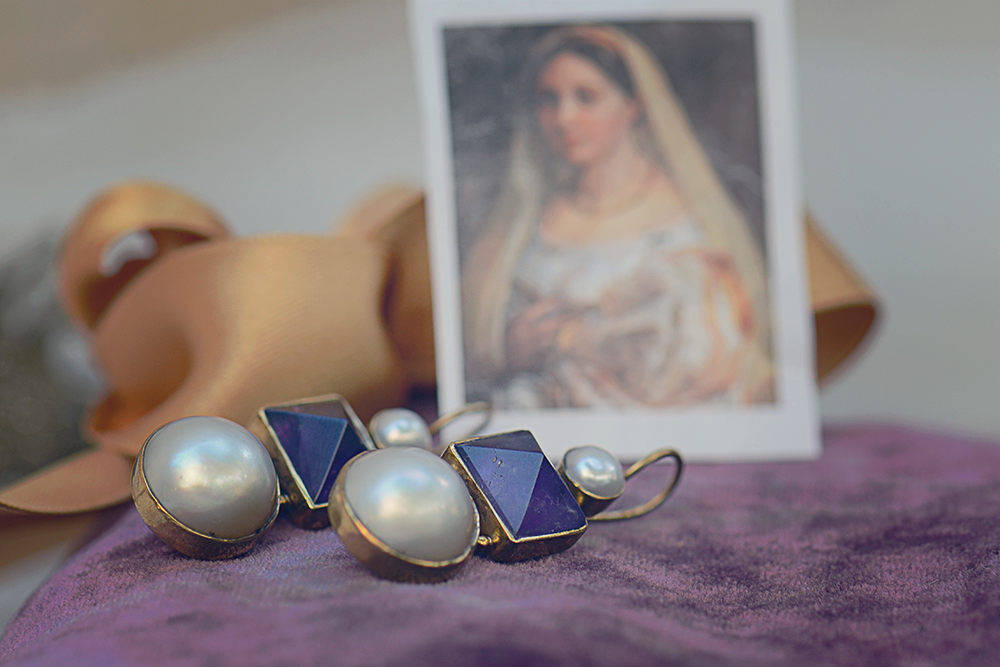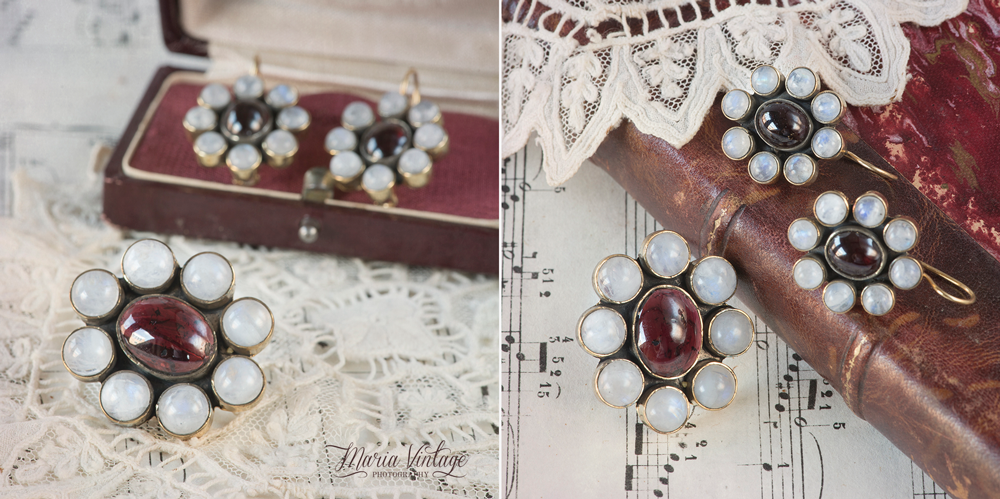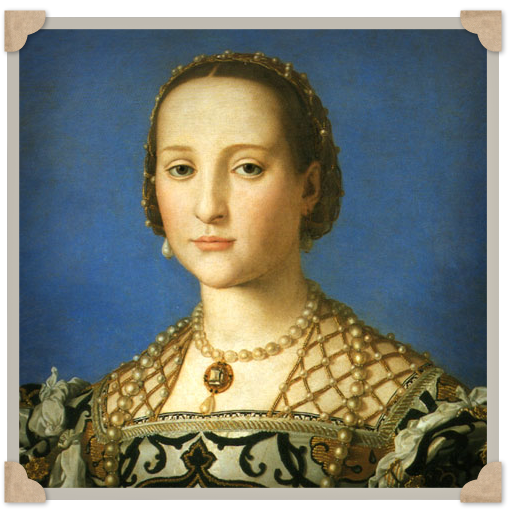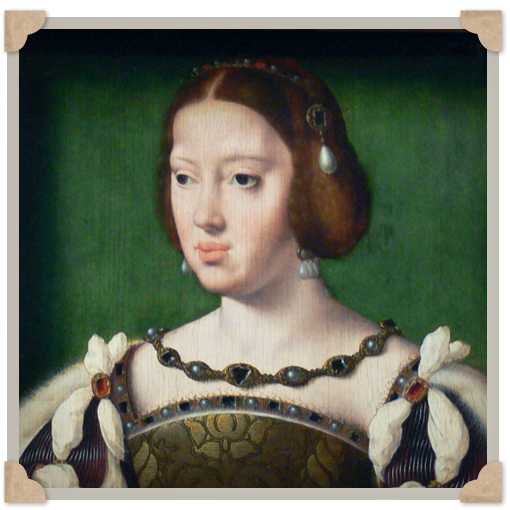What a coincidence!
Two nearly parallel lives, united in the twenty-first century by a piece of jewellery. An oval shaped broach with a beautiful stone in the centre and a large hanging pearl, which was used in its time as a pendant in a magnificent pearl necklace and as a brooch to finish off a beautiful head band.
After nearly 500 years, we continue to admire the beauty of this piece, immortalized by two great masters of the Renaissance paintings, Bronzino and Joos Van Cleve.
Two exciting lives, two women that fought, suffered and travelled. Two women that have made their own history and from this history we are left a few portraits displaying Leonor’s brooch.
Our first Leonor, Leonor of Toledo was the granddaughter of the second Duke of Alba, born in Alba de Tormes and at 20 years of age married inFlorence to Cosme I of Medici, the marriage produced 11 children of which only five reached adulthood. It was only a few years after the celebration of this wedding when Bronzino, of whom Leonor was the unconditional patroness, made this famous portrait that you can find in the Uffizi Gallery inFlorence. In the painting we see a very young Leonor showing off a broach on her neckline, with a magnificent pearl necklace. Her gaze transmits a sense of security and serenity to me.
A woman of extraordinary wealth from both her family and marriage, she never forgot her pious obligations and thanks to her insistence, the Jesuits installed themselves in Florencefor the first time.
Entrepreneurial and pioneering for her time, she took such interest in the agricultural and financial subjects that her knowledge contributed enormously to the expansion of the Medici’s farming business. Her capacity and dedication gave her husband all the more reason to trust in her, to the point of leaving her regent of all his matters during some of his numerous trips.
It is said of her that she was the only person capable of calming the bad moods of her husband, and that many people resorted to her in search of help for favours from her powerful husband.
She wasn’t Queen but she lived in two palaces fit for the most dignified of all “The Palace of Medici Riccardi” and “VecchioPalace” both of which are in Florence.
There was a legend that existed in her time about her death that spoke of revenge and assassinations. Following the legend it appeared that her son Garcia of 16 years, had killed his brother Giovanni of 19 and that the father, Cosme I, when learning about this vile murder, killed his son Garcia with his very own sword.
What is true is that he died soon after his two sons and although we know it was from malaria, we can imagine that two losses so soon after one another would have weakened his delicate health even more.
We can still admire the funeral dress conserved in the ‘Palazzo Pitti’s’ Costume Gallery.
Our second Leonor born Infanta of Spain in Brussels, daughter of Felipe el Hermoso (Phillip the Handsome) and Juanala Loca(Joanna the Mad), was the first of the six children of this famous marriage.
Separated from her parents at a very young age, due to them having gone to Castilein order for her mother to be crowned Queen, following the death of Isabel the Catholic. Leonor was brought up by her aunt Margarita, a woman of great rigidity, but who knew how to provide her with the care that a child of this early age needed and who loved her as if she were the girl’s very own mother.
Although from a very young age she would have realised that she had been born to be Queen, at 15 years of age she fell madly in love with a dashing gentleman named Federico, her brother Carlos (Charles) was enraged tremendously by the situation, and expelled the audacious gentleman, who dared to write a love letter to his sister, immediately from the court. In the wedding arrangements for her brother, Carlos did not contemplate a wedding for the sake of love, but instead a wedding for mere political interest as was needed at the time and even more so due to whom she was.
Leonor was called upon to be Queen and due to this she was lined up to possibly engage the most important Kings of her time like Henry VIII, Louis XII of France, Sigismund I of Poland and the principal heir to Portugal, Juan. Finally she ended up marrying the father of the last, King Manuel I ofPortugal, recently widowed he fell madly in love with her when they sent him her portrait in order for him to become familiarised with her. His son Juan never forgave this offence and the confrontation between father and son was such that King Manuel ended up expelling his son from the Portuguese court for fear of his own integrity.
Leonor became Manuel’s widow at the mere age of 23, with a small daughter named Maria who she was obliged to abandon inPortugaland did not see until 23 years later. From Portugal she moved to her brother Charles’ court with which she always shared a greatly caring relationship.
A few years alter becoming widow; our Infanta was contracting marriage with her second husband, the one who would take her back to her place on the throne, this time as the Queen of France. In this second marriage she would not be as happy as she was in the first. It was a marriage of political convenience as was the previous; however Leonor, older and becoming ill, didn’t manage to integrate herself in this court which was much more luxurious and refined than what she was used to; this together with her husband’s continuous infidelities made this perhaps the unhappiest period of her life.
Yet thanks to her character of natural goodness, comprehensiveness and simplicity, and to her privileges as the Queen of France, she managed to help the needy on numerous occasions, this won her the unconditional affection of the French population.
From this period of her life comes the magnificent portrait by Joos Van Cleve that is conserved inViennaand in which we can appreciate the beauty of our broach adorning Leonor of Austria’s hair.
Meanwhile Bronzino painted the famous portrait of Leonor of Toledo our Infanta, widowed by her second husband after 17 years of marriage, due to having no descendants and no real reason to keep her in France, Leonor returned immediately to the court of her brother Carlos, who she adored, and where she remained till the day she died in 1558.
Two great women and two great widows united by this broach of Renaissance jewellery, if you would like to have this magnificent copy in your hands don’t hesitate to visit our Vintage By space of Madrid.
Would you be capable of finding a twenty first century look for this magnificent sixteenth century broach?
